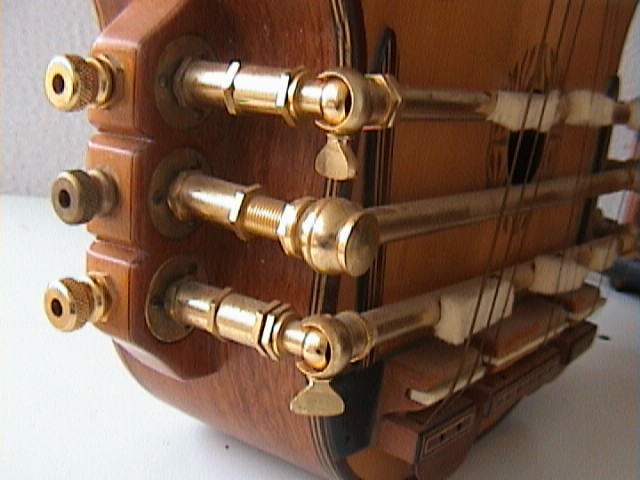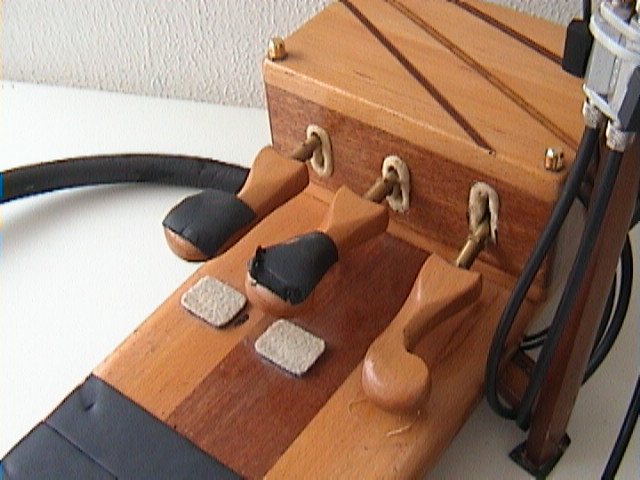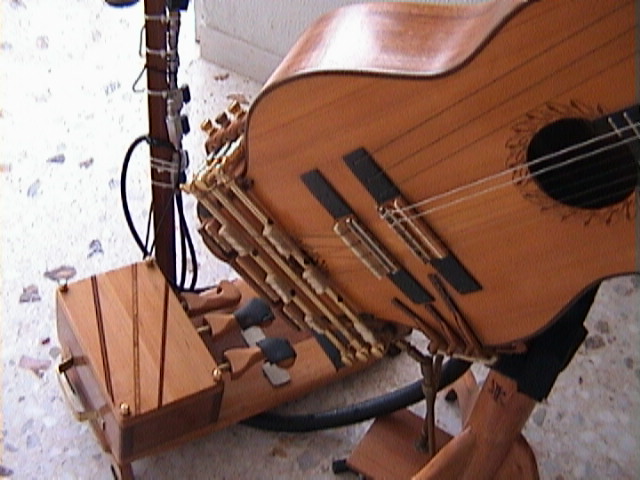1) By using only six extra strings in and out and around of the five in all bridges, we obtain 21 different vibrating string lengths, which we tune to the desired (specific for each string) tuning, according to the needs and we are also able to play these strings according to the musical needs.
2) The two levers that move up and down by the pneumatic system (through the needle that pushes them upwards with adjustable force by the pedals) apply the desired pressure-force specifically to nine string lengths. This function is responsible for the pedal effects on the guitar. The centered lever is stable to provide the necessary stability to the system.
3) As the strings pass under one main bridge and come up through the other bridge, they apply an upward torque force on the soundboard compensating for the extra downward torque forces that are exerted mainly on the soundboard itself and consequently to the sides of the instrument.They are engineering solutions resembling the flying bridge's design, very necessary to provide a dynamic equilibrium for the static as well as the vibratory state of the instrument.This is also essential for the smooth effect of the pedal mechanisms.
4) As the 21 string lengths are tuned to specific frequencies they enhance the Helmholtz resonant frequencies of the chamber as well as the frequency responce of the plate's tuning areas (top and back included) according to taste, because these can differ and can have a great variation in the range of the performer's taste.
5) They are also used as sympathetic strings in real time playing and they have a wide range of frequency adjustments.Please note that function 4) is a separate function differing from function 5).
The Physics of the Guitar
8 years ago






































No comments:
Post a Comment